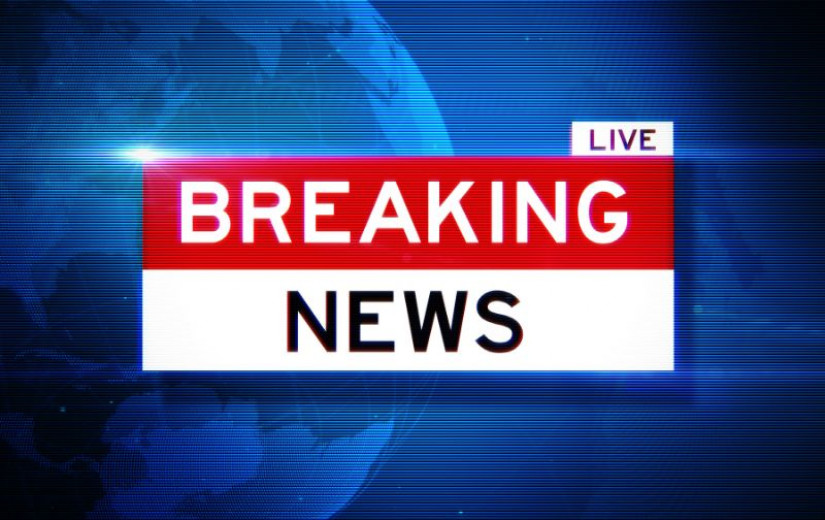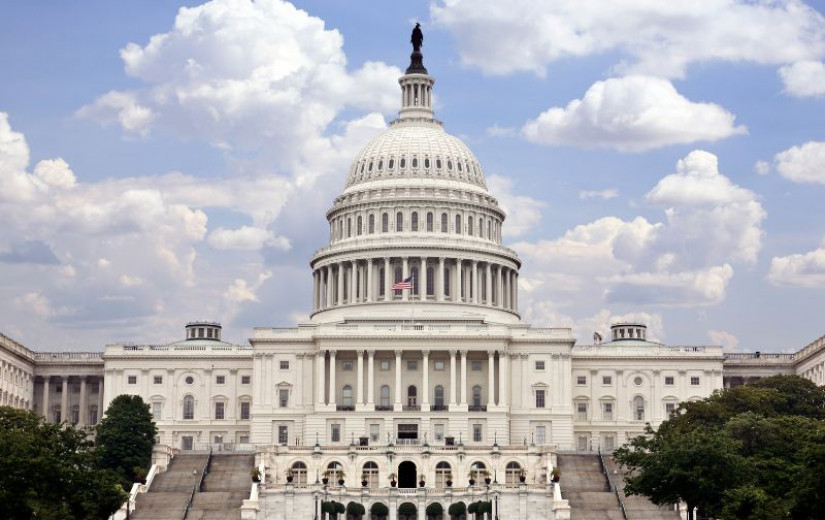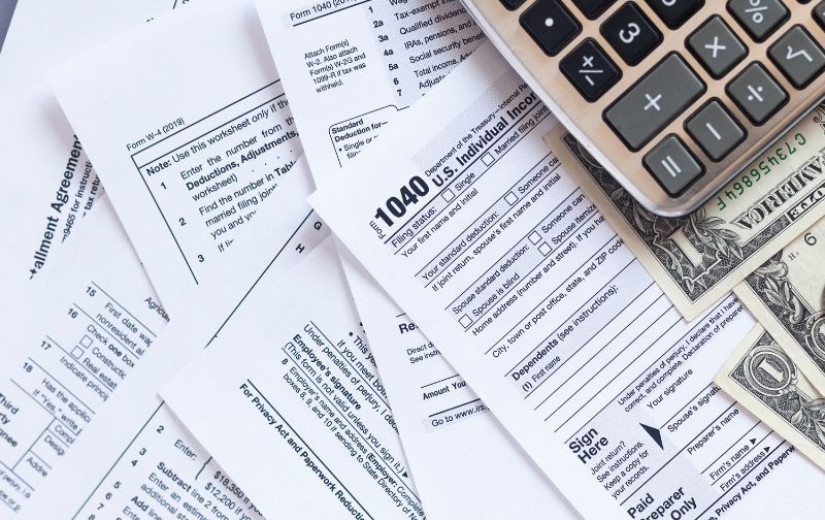
Failed to save article
Please try again

A poster of the "Trump Gold Card" is seen as President Donald Trump signs an executive order in the Oval Office at the White House on Sept. 19, 2025 in Washington, DC. KQED’s Forum spoke to experts about how H-1B visa holders in the Bay Area are reacting to the latest White House order. (Andrew Harnik/Getty Images)
On Sept. 19, panic struck an evening Emirates flight on the runway at SFO International Airport that was about to depart for India — as news spread in the cabin of President Donald Trump’s executive order concerning H-1B visas.
According to Business Insider, passengers began to stand up and leave the plane after receiving alerts and calls on their phones. Zarna Joshi, a U.S. citizen on the flight, said passengers had “already been onboard for two hours, and there were no updates — just more people leaving.”
Trump’s executive order had demanded companies pay $100,000 to supplement a single H-1B visa — a type of temporary visa category that allows employers to hire foreign workers in “specialty occupations” that usually require at least a bachelor’s degree. Previously, companies usually paid around $2,000 to $5,000 per H-1B visa.
Companies like Microsoft began sending urgent memos to their employees, recommending H-1B visa holders cancel any upcoming international travel and remain in the United States, or return immediately if they were currently abroad.
It took a day for the White House to clarify that the $100,000 fee only applied to new visas, and would not actually affect current visa holders or renewals.
Confusion, concern and $100,000
The White House claimed the measures would address what it called a “large-scale replacement of American workers through systemic abuse” of the H-1B program, which “has undermined both our economic and national security.” Many economists have historically pushed back on this claim, emphasizing that visa restrictions actually encourage companies to expand operations in other countries.
Nevertheless, Trump’s order is another part of the anti-immigration policies enacted since his inauguration in January.

The H-1B visa system is notoriously difficult for applicants to navigate. There is also a limit to the number of visas given out in a year, resulting in long waits and a major backlog.
The executive order has already had a major impact in California, a state with the most visa approvals at nearly 62,000 visa beneficiaries in the current fiscal year. According to the Wall Street Journal, nearly two-thirds of visa holders work in tech companies like Amazon and Google — with Amazon alone approving over 10,000 visa beneficiaries in the current fiscal year.
A vast majority of visa holders also come from India. In 2024, 71% of approved H-1B visa petitions were for people born in India. In comparison, people from China made up almost 12% of approved applicants.
To understand how communities in the Bay are reacting, KQED Forum spoke with lawyer Emily Neumann and journalists Pranav Dixit and Tanay Gokhale.
This interview has been edited for brevity and clarity.
The scale and scope of the H-1B program
Emily Neumann: We’re talking about 85,000 visas per year. Every year, that’s the cap: We have 65,000 for regular or bachelor’s degree holders and an extra 20,000 for master’s degree holders.
Now, we do have a larger population than that, because these visas are granted for three-year increments and can be extended for a total of six years. So we have six years’ worth of people in the country on this visa.

On top of that, because of green card problems [and] backlogs, because there’s a per-country cap, we have certain countries where H-1B holders can extend beyond that six-year limit because they’re waiting for their green card. And that is a very large population. There are hundreds of thousands of people in that situation.
That’s where it seems like there are so many H-1B holders out there, even though we only give out 85,000 a year.
Pranav Dixit: There are certain rules that even the H-1Bs are subject to. It’s not just “hire whoever you want on an H-1B.”
H-1B workers still have to be paid what is known as a prevailing wage. They can’t be paid way less than anybody else in that field makes. So there are already checks and balances in the system.
The central argument that tech companies have always made is: “This kind of visa gives us the freedom to hire for roles that we just cannot find American workers for.” Some of that has been challenged in the last couple of years with the thousands of layoffs across the tech industry. There are certainly lots of Americans who are out of jobs in the tech industry. But [there] has always been the central argument that these visas are used to fill roles that there’s just not enough STEM talent in this country for.
Tanay Gokhale: There are legitimate problems with the H-1B visa system: the way the lottery is run, the way outsourcing has become a bigger problem over the past few years. In fact, before the current administration’s attack on H-1B started, Bernie Sanders wrote about it in a Senate report in February, speaking about the same issues that the current administration is speaking about.

But on the flip side … if there really is a shortage of domestic workers — and I’ve been hearing that in some cases there is — [it’s] really a sort of supply issue. [If] tomorrow, you just cut off all foreign workers [from] being able to work in these tech companies, these companies will have a hard time. It is really a bigger issue for firms that do not have the resources of the really big tech companies.
I understand that there are legitimate concerns. But the sheer volume of workers that are staffing firms in the US, the volume of foreign workers … it just demands a little more thought and a little bit more concerted policy changes.
How the H-1B executive order unfolded
Dixit: It definitely came as a big shock, right when everyone was trying to wrap up their week and get ready for the weekend. I think the initial chaos stemmed from the way the proclamation was written originally. Everyone felt that even current visa holders might be banned from reentry unless their employers paid $100,000. It was effectively a travel ban for anybody on an H-1B.
Within a day, the White House clarified that the fee doesn’t apply to anyone with an existing visa or anybody who’s renewing a visa, and then things calmed down a little.

Neumann: The first email I got was from an HR director saying, “Hey, our CEO is hearing something about a $100,000 fee. How is this going to impact us? Is this true?”
And so then we’re scrambling to find out what is going to be in this executive order. We’re listening live, as he’s signing this order, and we have someone saying that this is going to apply to everyone, every H-1B, every year. And then a few minutes later, we get the actual text of it, which sounds quite different, but also sounds like it applies to everyone. And then we start getting these clarifications, coming on Twitter of all places, rather than anything official.
But then we have three different agencies posting fact sheets and FAQs, and still we have questions. But at least we know: People who are outside the U.S. could still travel back in. And those that were in the U.S., leaving, were still safe to go out and come back in.
In my mind, what [Trump’s] done just now is just the beginning. This is not the only restriction they have planned. We’ve got more coming.
Silicon Valley’s reaction
Dixit: I thought that Reed Hastings’ comment was really interesting, but I feel like he may also have been a bit of an outlier. [The Netflix chairman and co-founder called the $100,000 fee “a great solution” and said that H-1B will be “used just for very high value jobs.”]
H-1B visas are central to the way that most tech companies have hired international workers for more than three decades at this point, for roles that they say they just can’t fill with American workers alone.

Most H-1B visas are used by the big tech companies: the Microsofts, the Googles, the Apples, and the Amazons. But also a large chunk of them go to the IT consulting and outsourcing firms.
There’s a lot of sentiment in the Valley that, “Hey, there are genuine problems with this program right now.” But in the long term, if this fee sticks, it is going to impact the ability of almost everyone to hire for roles that they may not find American workers for.
Neumann: The companies I work with constantly talk about how we have these positions that are going unfilled. Not necessarily the big tech companies, but small, mid-sized companies. They do hire engineers, not just in tech, and all the time we hear about, “We can’t find someone to do this work.”
The process itself, the fact that we’re choosing people based on a lottery … because we have these caps that were set before the internet even existed. We also have this green card backlog that impacts the H-1B, because people are stuck on an H-1B for years and years and years based on their country of birth. There are a lot of problems with the program, but I think companies are not happy about this $100,000 fee for sure. I don’t know of any company I’ve come across that is willing to pay it. I think they will hopefully be looking for an exemption.
Otherwise, they will look at only sponsoring individuals who are in the U.S., who we think would not be subject to this fee.
The H-1B impact on health care in the US — and who might be exempt
Neumann: Universities, hospitals, medical facilities tend to sponsor people who are outside the U.S. Because most of these are cap-exempt institutions, they can file all year round. They don’t have to worry about this lottery in March and filing in April. And so they do bring a lot of people in [who] are outside the country.

This $100,000 fee applies to any petition being filed for someone who’s outside the county. The only filings happening right now are going to be these cap-exempt institutions. Which are for our doctors, for our nurses, for our researchers. So it’s really shooting us in the foot.
Dixit: I did hear about an exemption for people like doctors. I think this stuff is changing so rapidly at this point that it’s really hard to tell. I think it’s a wait-and-watch at this time.
Neumann: The Secretary of Homeland Security will get to decide whether an individual is going to be in the national interest, or a particular company, or a particular industry. We have zero information on what factors they will consider.
We have a little bit of prior experience with these national interest exemptions from the previous travel ban, but we don’t know if they’re going to be the same. We don’t know if maybe the companies that are liking this provision have already been told behind the scenes that they’re going to get an exemption. We don’t know what the factors are going to be, and there’s no guidance yet.
The legalities — and possible long-term impacts — of the executive order
Neumann: [Trump’s] authority comes from the Immigration and Nationality Act, Section 212F. That’s an entry ban. He can block anyone from entering if he feels it’s in the national interest.
He does not have the ability to impose a $100,000 fee. Fees are set by Congress. And they can be adjusted based on inflation through the regulatory process, but it’s not something the president can unilaterally impose. There’s going to be litigation on that for sure.

We’re also going to have to see how these exemptions work. If they allow for a lot of exemptions where this isn’t that big of an issue for most U.S. companies, it might be workable. But it definitely impacts the overall path for people who are currently in the U.S., as well as those who might be considering the U.S. as a destination. We saw, during the previous Trump administration, that people were looking to Canada, looking to other countries to make their home because of such uncertainty with the H-1B and the path to the green card. So I think we’re going to see that again, we’re going to start losing talent if we continue these types of restrictions.
Dixit: I think people who would have looked at immigrating as a complete no-brainer are increasingly rethinking that decision. They’re increasingly choosing to spend their lives in Canada or Mexico or India.
Tech companies are responding to that. We’ve seen lots of offshoring to these countries in the last few years. I remember it was 2023, when Canada opened a special visa for 10,000 U.S. H-1B workers, and it filled up in [24] hours. People are increasingly getting tired of the constant instability.
If this sticks — and I think there is a big “if” [around] this $100,000 fee, with litigation and everything — I think companies are going to rethink hiring in the U.S. More than hiring locally, it’s going to lead to an offshoring of jobs to Canada, Mexico, India and maybe other places around the world.
The effect on Bay Area communities
Gokhale: In the short term, there was obviously panic among visa holders who are outside the country or planning to travel outside the country. And even after the clarification — though there was some amount of relief that “we are not in immediate danger” — the big emotion that has emerged from this is uncertainty and confusion among international workers, [and also] international students, many of whom hope to apply next year for the H-1B.

There is definitely concern about, “Even if they haven’t come for us right now, will they eventually come for us in the next few months, in the next year?” It’s thrown a lot of things into a tailspin for a lot of people who have planned to live their life here, to set up a family, to set up a career in this country.
I’ve had conversations in the past few days that signaled to me that there’s a sense of disillusionment with the “H-1B, green card, citizenship” pipeline of the American dream. There just seems to be a massive reevaluation of whether the United States is still a good option to invest your future.
I definitely see a lot of anti-Indian hate in general on social media. Reddit, Instagram, TikTok, any social media channel of your choice. There’s a lot of new, sometimes really wild, disturbing stuff coming out about Indians, Indian stereotypes — which I thought were on the way out — are suddenly making a resurgence.
I’ve personally covered hate crimes where there’s some pretty graphic anti-H-1B graffiti on a public park bathroom, which is something that I think can only happen in Silicon Valley or in the Bay Area.
I don’t think the U.S. is the only place where this is happening. We’re seeing an anti-immigrant sort of sentiment in Australia, specifically targeted toward South Asians, in Ireland, in Canada.
It’s a global trend that we’re seeing: anti-immigrant sentiment in general.









